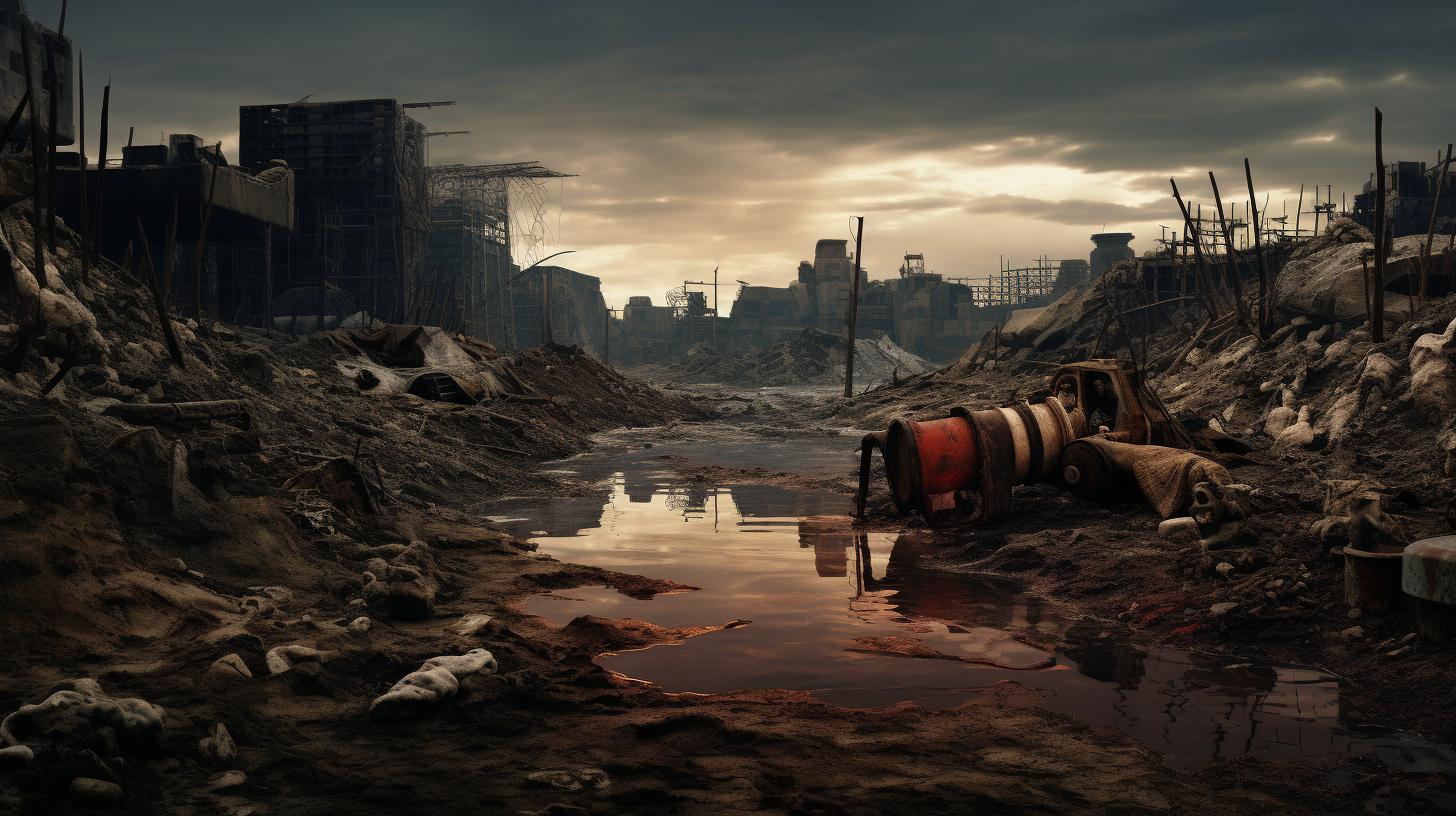In the dust-laden silence of what was once a thriving market square, there now stands a bazaar quite unlike any other—a trade hub for what has transcended precious metals and fossil fuels to become the rarest of commodities. Welcome to the Water Markets of the Wasteland, the pulsating heart of our arid world, a grim nod to the resource that once flowed abundantly and is now more coveted than gold: freshwater.
Amidst the parched ruins of civilization, these markets represent the apex of human desperation and ingenuity. They are a surreal blend of past grandeur and present survival, where water is currency and life. Barter has made a fierce comeback, with traders exchanging anything from solar batteries to heirloom seeds for a meager ration of water.
Survivors gather under tattered canopies, shading themselves from the relentless sun that burns remorselessly in the sky. Here, fortune favors those who have adapted—rainwater collectors, aqua-farmers, and those rogue few with access to hidden springs.
A withered old man, known simply as ‘Mariner’, stands guarding what looks to be a moisture-condensing apparatus, a relic repurposed from a time when the seas were not acidified. “Once, wealth was measured in opulence and excess, now it’s liquidity of a different sort, the amount of water one can claim,” he quips with a sly grin, his eyes reflecting the grueling truth of our era.
The disparity between the ‘Wet Barons’ and the common folk is stark. The elite trade in vast quantities, hoarding reserves in subterranean vaults, while the masses make do with what little they can scavenge or filter. This new hierarchy, much like the old, is underpinned by control of resources but has taken on a poignant twist of irony—humans are now beggars at the throne of nature.
Anecdotes swirl in the dusty air of people once affluent, now destitute without their liquid assets. There are whispers of conflicts erupting at the fringes where boundaries blur between the arid ‘have-nots’ and the irrigated havens of the ‘haves’.
Children, born into this desiccated world, play at trade—precocious brokers learning the ropes of ration negotiation. They mimic their elders but with a playful ignorance that belies the severity of their reality. “Two pebbles for a sip,” one jests, unknowingly encapsulating the gravity of their situation in innocent barter.
As the sun sears the horizon, painting the sky blood red, the market begins to close. The day’s trades slow, the vendors wrap their precious remnants in oilskin and retreat into the labyrinth of their enclaves. A solemn reminder that here, in the wasteland, water is not just gold—it is life itself. The day’s tales will be woven into the fabric of the ongoing saga of human endurance against the backdrop of ecological collapse.
Yet, even here, hope is a rare commodity, one not easily traded or quantified. And though the market may reek of despair, it also speaks to a tragic resilience; a grim dance of supply and demand that mirrors the ebb and flow of our declining environment.
Tonight, communities will huddle, rationing their acquired water beneath a sky no longer speckled with stars but veiled by a cloak of human folly, contemplating the morrow—another day in the thirsty bazaars of a world we’ve reshaped, but cannot quench.
